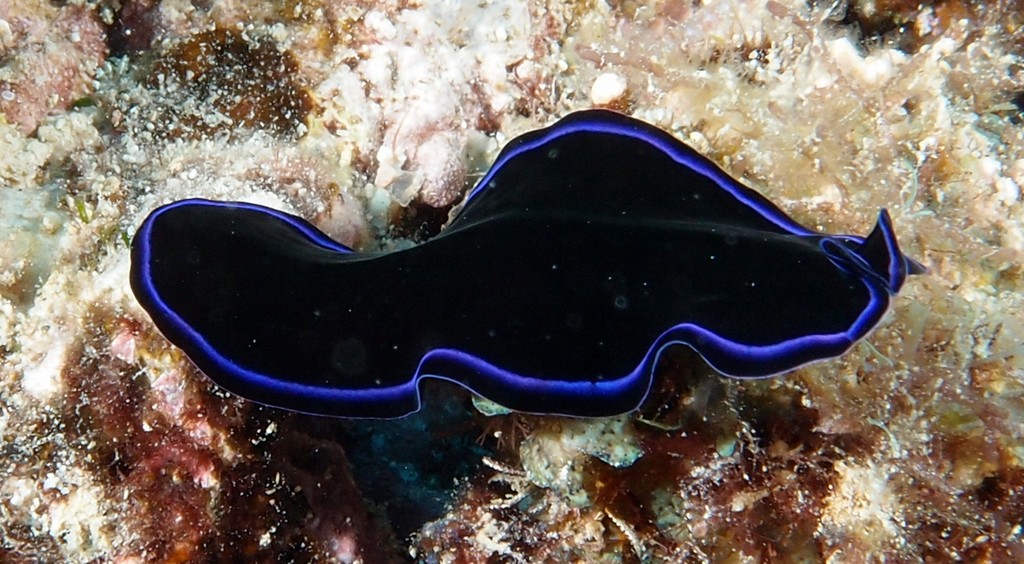PSEUDOCEROS SAPPHIRINUS - (NEWMAN & CANNON, 1994)
Polycladida (Order) > Cotylea (Suborder) > Pseudocerotoidea (Superfamily) > Pseudocerotidae (Family) > Pseudobiceros (Genus)
Description
About 4cm long. Body black, edges bright blue and with a black outer border, and is usually slightly ruffled. It has a pair of erect pseudotentacles at the front made up of folded edges of the body. Thick body without ruffled margins. The background is black with velvety appearance with a bright blue narrow band near to margin and an extremely white line at rim, sometimes yellow or turquoise. The ventral surface is black with the white rim. Pseudotentacles formed by simple broad folds of the anterior margin but the pseudotentacular eyes are not visible because of the dark pigment. The cerebral cluster contains about 40 eyespots and a big ruffled pharynx formed by elaborated folds.
Biology
Pseudoceros sapphirinus mimics the color pattern of Philinopsis gardineri (Eliot, 1903), a sea slug which is distributed throughout the Indo-Pacific Ocean.
Description
About 4cm long. Body black, edges bright blue and with a black outer border, and is usually slightly ruffled. It has a pair of erect pseudotentacles at the front made up of folded edges of the body. Thick body without ruffled margins. The background is black with velvety appearance with a bright blue narrow band near to margin and an extremely white line at rim, sometimes yellow or turquoise. The ventral surface is black with the white rim. Pseudotentacles formed by simple broad folds of the anterior margin but the pseudotentacular eyes are not visible because of the dark pigment. The cerebral cluster contains about 40 eyespots and a big ruffled pharynx formed by elaborated folds.
Biology
Pseudoceros sapphirinus mimics the color pattern of Philinopsis gardineri (Eliot, 1903), a sea slug which is distributed throughout the Indo-Pacific Ocean.
